Car window tinting: Knowing how much it costs can be a puzzle, but it doesn’t have to be. At CARS.EDU.VN, we break down the factors influencing the price of window tint, offering you insights into the types of film, vehicle models, and services that fit your needs. Discover the perfect balance between cost and quality for your vehicle’s window tinting needs with our guidance and unlock expert advice on automotive customization and vehicle enhancement.
1. Understanding Car Window Tinting Costs: An Overview
The question “How Much Is Car Window Tinting” doesn’t have a straightforward answer, as prices can fluctuate considerably. Several elements influence the total cost, making it essential to grasp these variables before making a decision. The type of vehicle, the specific tint film brand, the material and type of tint, the number and complexity of windows, and even the location of the tinting service all play significant roles.
- Vehicle Type: Sedans, coupes, trucks, and SUVs have varying window sizes and shapes, impacting the amount of film needed and the labor involved.
- Tint Film Brand: Established brands often come with higher price tags due to their reputation for quality and warranty offerings.
- Tint Material: Different materials, such as dyed, carbon, or ceramic films, offer diverse levels of heat rejection, UV protection, and durability, directly affecting the cost.
- Number and Complexity of Windows: More windows or windows with complex curves can increase labor time, thus raising the overall cost.
- Service Provider: Professional tint shops, mobile tinters, and auto detailing companies have different pricing structures based on their overhead and expertise.
- Geographic Location: Prices vary by region due to differences in demand, competition, and cost of living.
1.1. What Factors Drive Window Tinting Prices in 2024?
Several factors can influence window tinting prices in 2024. Understanding these will enable you to make a more informed decision and potentially save money without compromising on quality.
| Factor | Description |
|---|---|
| Type of Automobile | Larger vehicles and those with uniquely shaped windows typically require more film and labor, leading to higher costs. |
| Window Tint Brand | Reputable brands known for quality and longevity often charge more. |
| Tint Type/Material | Options range from basic dyed films to high-end ceramic tints, each offering different levels of UV protection, heat rejection, and durability, impacting the price. |
| Number of Windows | The more windows you tint, the higher the material and labor costs. |
| Window Complexity | Windows with tight curves or unusual shapes require more skill and time to tint, increasing the price. |
| Service Provider | Prices vary among professional tint shops, mobile tinters, and auto detailing companies, reflecting differences in overhead and expertise. |
| Location | Prices differ by geographic location due to variations in demand, competition, and cost of living. |
| DIY vs. Professional | Doing it yourself can save on labor costs, but requires specific tools, skills, and carries the risk of mistakes and non-compliance with local laws. |
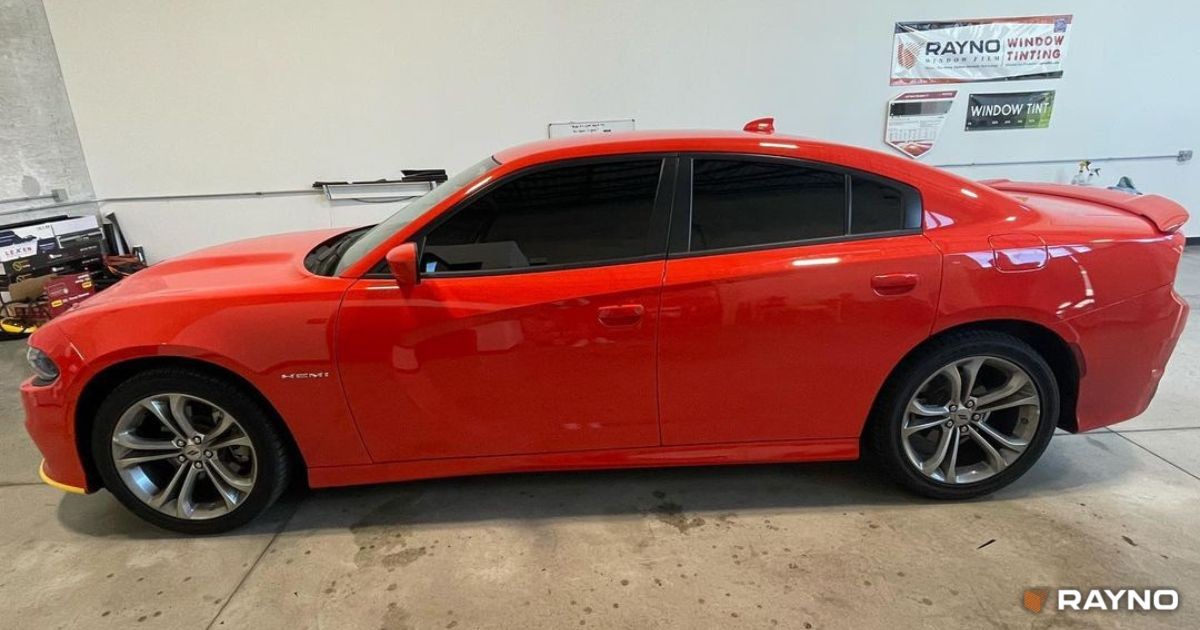
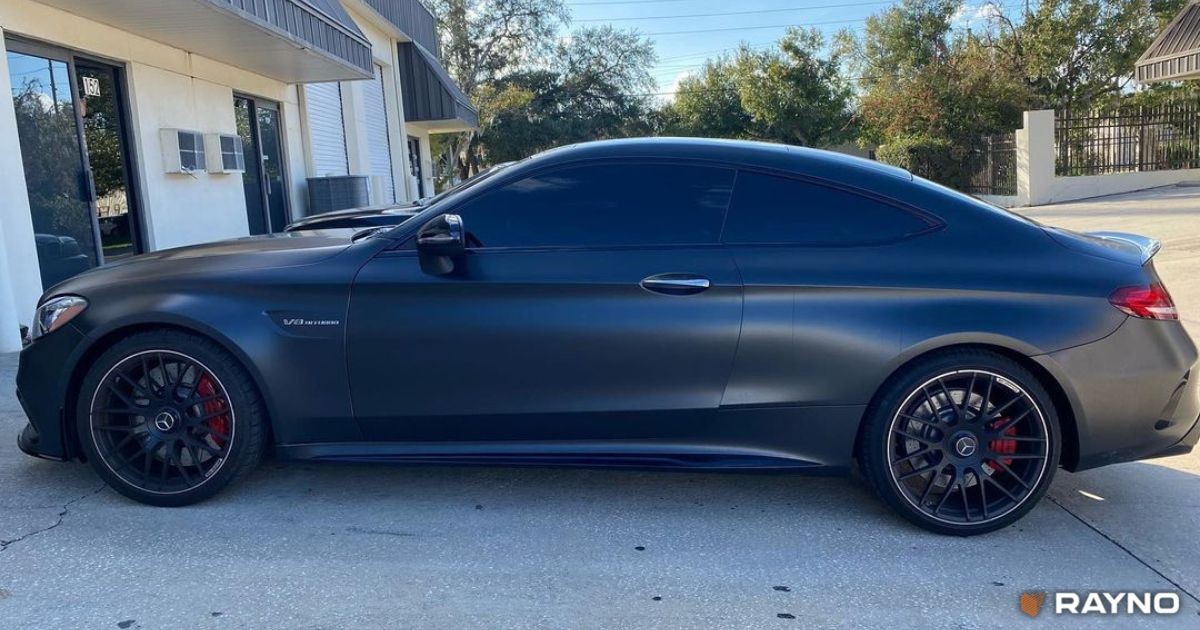
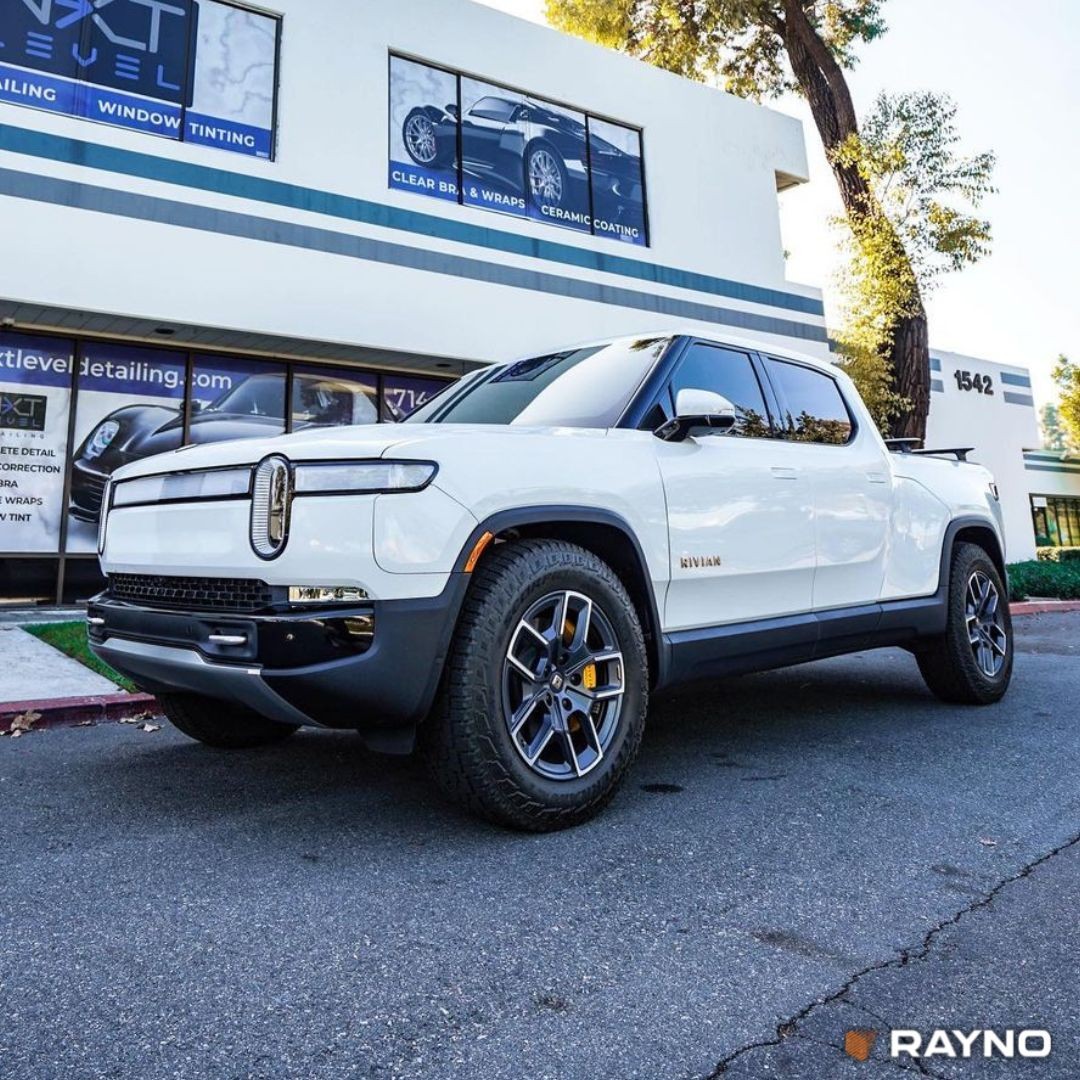
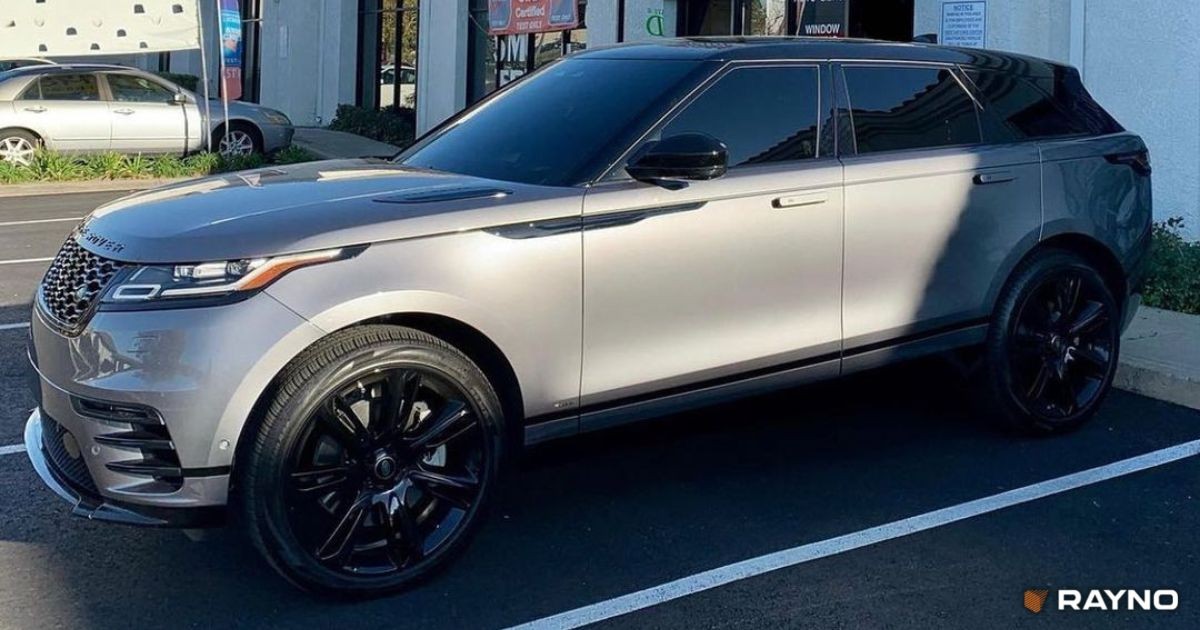
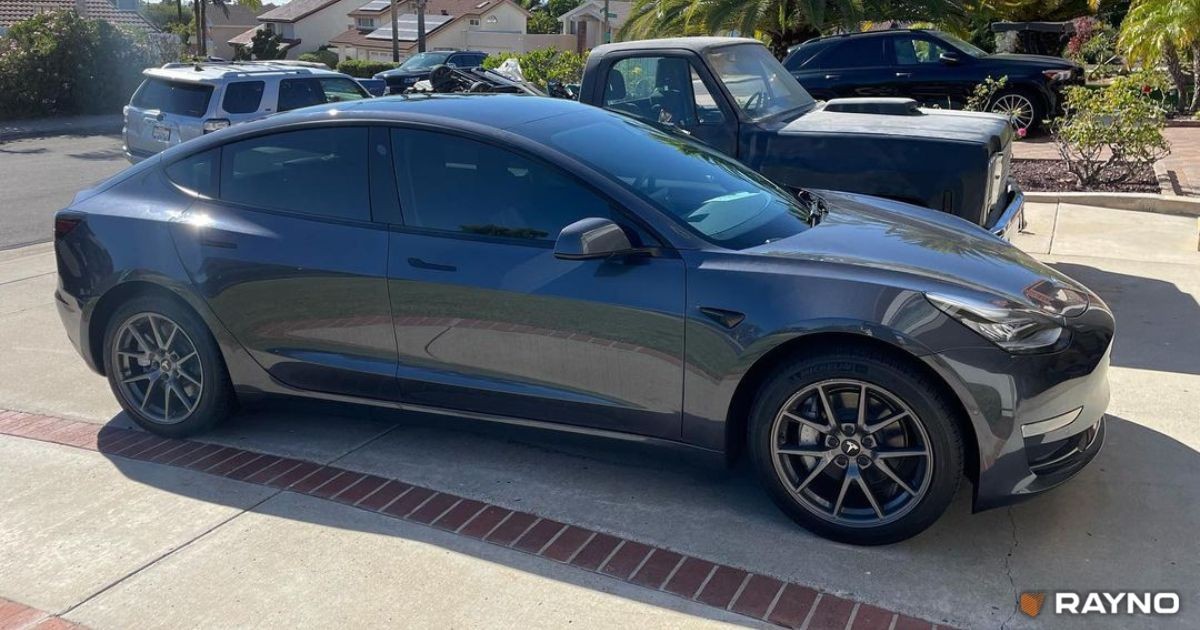
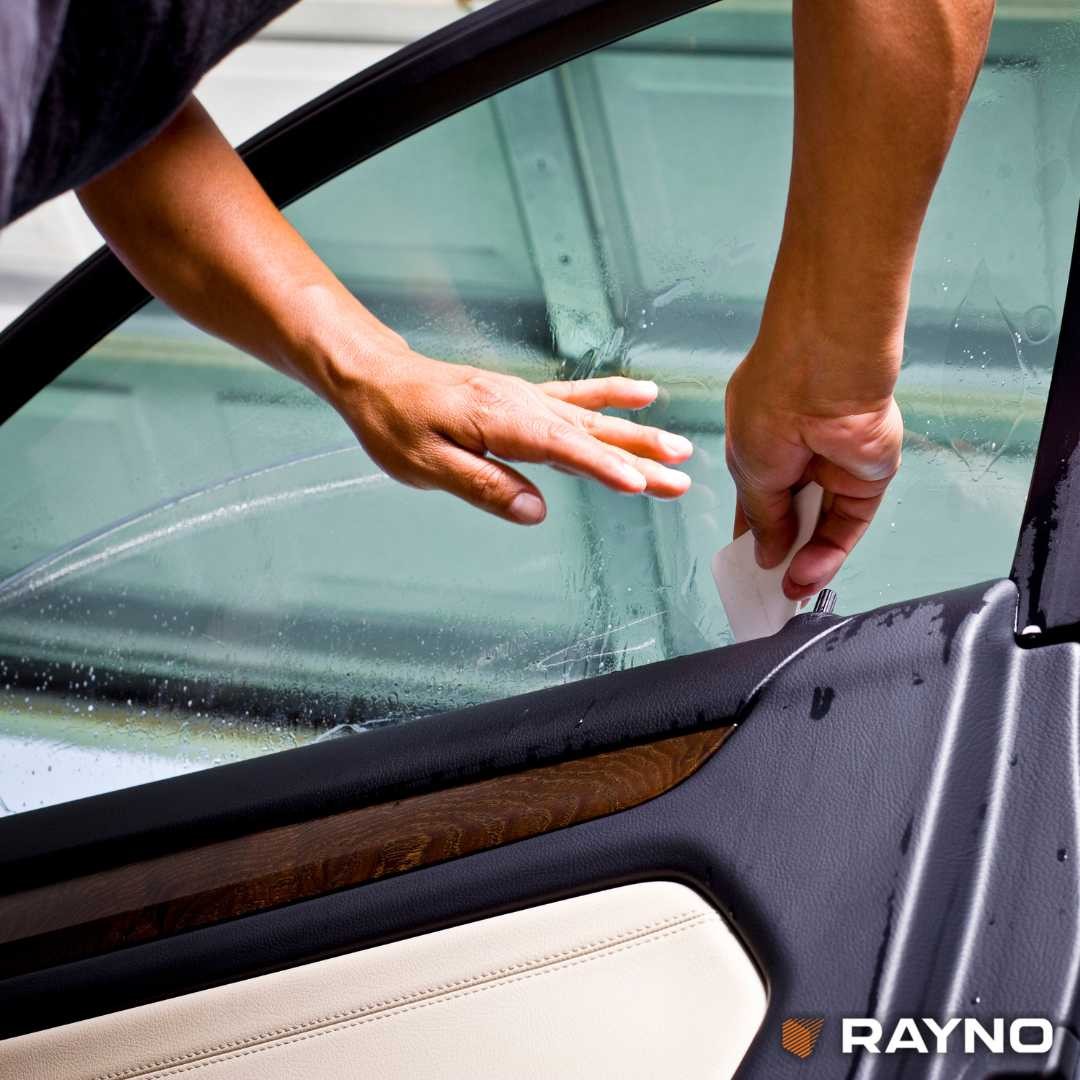
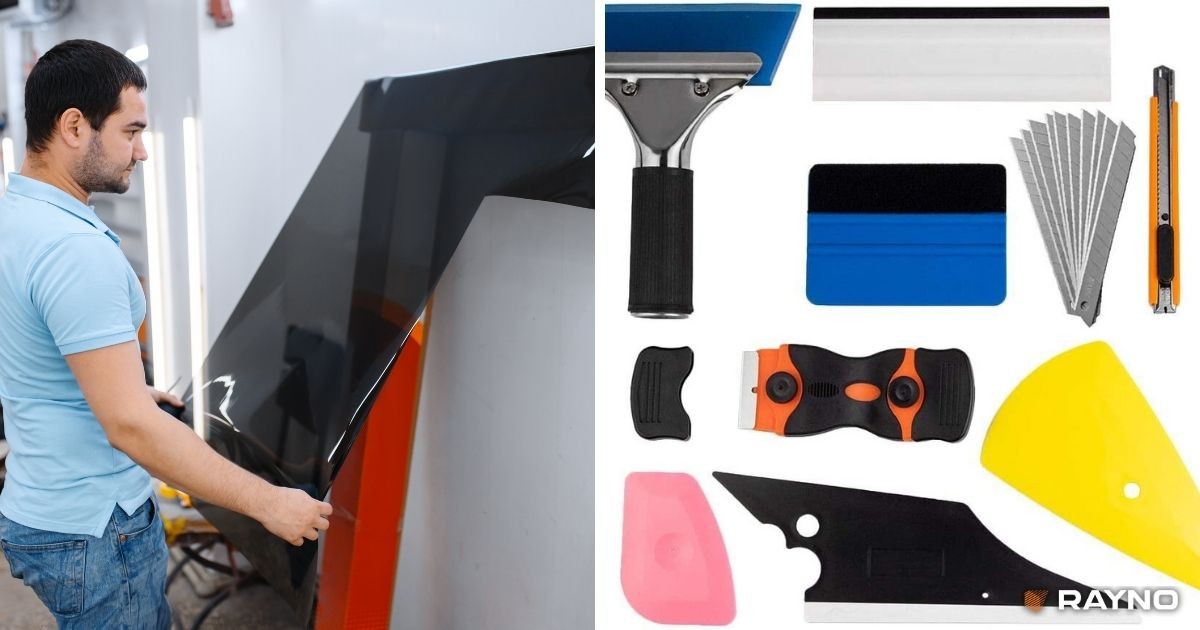
1.2. Choosing the Right Tint: Balancing Price and Quality
Navigating the selection of window tint brands and materials while considering price can be complex. Professional window tinting offers assurance, helping you avoid regulatory concerns and the challenges of DIY installation. Professional installers have the skills and tools to ensure a high-quality finish, preventing issues like bubbles, peeling, and uneven application.
When choosing a window tint, consider the following factors:
- Heat Rejection: How well the tint blocks infrared rays, which cause heat buildup inside the car.
- UV Protection: The level of protection against harmful UVA and UVB rays, which can damage your skin and fade the car’s interior.
- Glare Reduction: How effectively the tint reduces glare from sunlight and headlights, improving visibility and driving comfort.
- Durability: The film’s resistance to scratches, fading, and peeling over time.
- Aesthetics: The tint’s appearance, including color, darkness, and finish.
- Warranty: The length and coverage of the warranty offered by the manufacturer or installer.
By balancing these factors with your budget, you can select a window tint that meets your needs and provides long-lasting value.
2. Average Window Tinting Prices by Car Type
To provide a clearer understanding of potential costs, we’ve compiled average window tinting prices based on different types of vehicles. Keep in mind that these are estimates, and actual prices may vary.
2.1. Sedans (4-Door Cars)
Sedans typically have seven windows that require tinting: two front sides, two back sides, two rear quarter windows, and the rear window.
- Affordable Tint (e.g., Carbon Tint): $50 per window or approximately $250 for all seven windows.
- Higher-End Tint (e.g., Ceramic Tint): $100 per window or around $650 for all seven windows.
Rayno offers a range of tint options for sedans, including MonoCarbon (affordable carbon tint) and Phantom S9, S7, and S5 (high-performance nano carbon ceramic tint series).
2.2. Coupes
Coupes, with their two-door design, often have steep rear or curved windows, which can increase the complexity and cost of tinting. The average cost for tinting a coupe (with five windows) ranges from $120 to $450.
2.3. Trucks
Tinting the windows of a pickup truck typically costs around $350. The size of the truck and the inclusion of slider windows can affect the price.
2.4. SUVs
SUVs usually have more windows and larger surface areas, leading to higher tinting costs. Expect to pay between $250 and $750 for window tinting on an SUV.
2.5. Tesla Window Tinting Cost
Tesla window tinting costs vary based on the model and number of windows tinted. Owners have reported prices ranging from $250 to $935 for all-around tinting. Full 360-degree protection is recommended to safeguard against harmful UV rays.
3. Cost for a Tint Job by Type of Film
The type of film you choose significantly impacts the overall cost of the tint job. Here’s a breakdown of the three main types of automotive window film and their average prices:
3.1. Ceramic Window Tint Cost
Ceramic window film is a premium option known for its superior heat rejection, UV protection, and durability. It doesn’t contain metal or dye, so it won’t interfere with cell signals, GPS systems, or radios. Expect to pay between $350 and $850 for ceramic tint.
Rayno’s Phantom series is a hybrid of ceramic and carbon, offering excellent color stability, durability, heat rejection, and visibility.
3.2. Dyed Window Tint Cost
Dyed window tint is the most affordable option, using a dye added to a layer next to the adhesive. However, it’s less effective at blocking heat and UV rays, and the dye can fade over time, causing the tint to turn purple, brown, or transparent. Dyed window tint costs between $99 and $350.
3.3. Carbon Window Tint Cost
Carbon tint contains carbon particles that block infrared light and keep interiors cooler. It doesn’t fade as quickly as dyed films and doesn’t interfere with cell phone or radio transmissions. However, it can create glare and haze, affecting visibility. Carbon window tint costs between $150 and $450.
Rayno’s MonoCarbon film contains nano-scale-sized carbon particles, providing a clearer view without haziness and a beautiful black shade.
3.4. Film Comparison Table
| Feature | Dyed Window Tint | Carbon Window Tint | Ceramic Window Tint |
|---|---|---|---|
| Price | $99 – $350 | $150 – $450 | $350 – $850 |
| Heat Rejection | Low | Medium | High |
| UV Protection | Low | Medium | High |
| Durability | Low | Medium | High |
| Signal Interference | None | None | None |
| Glare/Haze | None | Possible | None |
4. Other Window Tinting Cost Factors
Besides the type of vehicle and film, several other factors influence the price of window tinting.
4.1. Number and Complexity of Windows
The more windows you tint and the more complex their shapes, the higher the cost. Cars with complex windows, such as the VW Beetle, Corvette Z06, and Audi A8, require more time and skill, increasing labor costs.
4.2. Warranty
The warranty offered on the film is another important factor. Some films, like Rayno Phantom, come with a lifetime warranty, while others have shorter warranty periods. A longer warranty provides peace of mind and can save you money in the long run if the tint fails prematurely.
4.3. Location and Laws
Tint costs can vary significantly depending on your location. Areas with high demand may charge more, while those with more competition may offer better deals. It’s recommended to get quotes from at least three locations to compare options and pricing.
Additionally, state laws regarding legal VLT (Visible Light Transmittance) percentages can affect your tint options. Be sure to familiarize yourself with your state’s tint laws to ensure compliance.
4.4. State-Specific Regulations
Different states have varying regulations regarding the darkness and reflectivity of window tints. These laws often specify the minimum VLT percentage allowed for front side windows, rear side windows, and rear windows. Some states also restrict the use of mirrored or reflective tints.
Before getting your windows tinted, research your state’s specific regulations to avoid potential fines or the need to remove non-compliant tint. Resources like the International Window Film Association (IWFA) and CARS.EDU.VN can provide detailed information on state tint laws.
5. DIY vs. Professional Window Tinting: Which is Right for You?
While DIY window tinting kits offer a more affordable option, they come with several considerations.
5.1. Potential Savings of DIY Window Tinting
DIY window tinting can save you money on labor costs, but it requires specific tools, skills, and patience. Applying the tint yourself increases the risk of bubbles, creases, and uneven edges, potentially leading to a less-than-perfect finish.
5.2. Risks and Challenges of DIY Installation
Even with experience detailing vehicles, achieving professional-quality results with DIY tinting can be challenging. Additionally, you need to ensure that the tint you choose complies with your state’s legal limits.
DIY tinting also carries the risk of damaging the film or your car’s windows, potentially costing you more in the long run. If you’re not confident in your abilities, it’s best to leave the job to a professional.
5.3. Why Professional Installation Might Be Worth the Investment
Professional window tinters have the experience, tools, and expertise to ensure a flawless installation. They can also help you choose the right tint for your needs and budget, ensuring compliance with local laws.
By opting for professional installation, you can avoid the frustration of DIY tinting and the added cost of redoing the job if you make mistakes.
6. Finding the Best Window Tinting Prices Near You
To get an accurate estimate for window tinting, it’s best to find a reputable tint shop near you.
6.1. How to Get Accurate Estimates
Contact local tint shops and request quotes for the specific type of film and vehicle you have. Be sure to provide accurate information about your car’s make, model, and year, as well as the number of windows you want to be tinted.
6.2. Comparing Quotes from Different Shops
Compare quotes from multiple shops, considering not only the price but also the quality of the film, the installer’s experience, and the warranty offered.
6.3. Questions to Ask Before Hiring a Tinter
Before hiring a tinter, ask the following questions:
- What type of film do you recommend for my needs and budget?
- What is the VLT percentage of the film?
- Does the film comply with my state’s tint laws?
- What is the warranty on the film and installation?
- How long will the installation take?
- Do you offer a satisfaction guarantee?
- Can I see examples of your previous work?
- Are you licensed and insured?
- What is your process for handling any issues or problems that may arise?
6.4. Factors Affecting Quote Variation
Several factors can contribute to variations in quotes from different tint shops, including:
- Film Quality: Higher-quality films typically come with higher prices.
- Installer Experience: More experienced installers may charge more for their expertise.
- Shop Overhead: Shops with higher overhead costs may need to charge more to cover their expenses.
- Location: Prices can vary depending on the location of the shop and the local market conditions.
- Promotions and Discounts: Some shops may offer promotions or discounts that can lower the overall cost.
- Warranty Coverage: Shops offering more comprehensive warranty coverage may charge more for the added protection.
- Additional Services: Some shops may include additional services, such as window cleaning or detailing, in their quotes.
By carefully considering these factors and asking the right questions, you can find a tint shop that offers the best value for your money.
7. Window Tint Film Types: Pros and Cons
Choosing the right type of window tint film is crucial for achieving the desired balance of aesthetics, performance, and cost. Here’s a detailed look at the pros and cons of each type:
7.1. Dyed Window Tint
- Pros:
- Most affordable option.
- Available in a variety of shades.
- Can reduce glare and provide some UV protection.
- Cons:
- Least effective at blocking heat.
- Prone to fading and discoloration over time.
- Offers limited UV protection.
- May bubble or peel.
7.2. Carbon Window Tint
- Pros:
- Better heat rejection than dyed film.
- Doesn’t fade as quickly as dyed film.
- Doesn’t interfere with cell phone or radio transmissions.
- Available in a range of shades.
- Cons:
- Can create glare and haze.
- More expensive than dyed film.
- Offers less heat rejection than ceramic film.
7.3. Ceramic Window Tint
- Pros:
- Highest heat rejection.
- Excellent UV protection.
- Durable and long-lasting.
- Doesn’t interfere with cell phone or radio transmissions.
- Reduces glare without haze.
- Cons:
- Most expensive option.
- May not be available in as wide a range of shades as other films.
7.4. Metalized Window Tint
- Pros:
- Good heat rejection.
- Scratch-resistant.
- Offers a unique reflective appearance.
- Cons:
- Can interfere with cell phone, GPS, and radio signals.
- May fade or corrode over time.
- Not legal in all states.
7.5. Hybrid Window Tint
- Pros:
- Combines the benefits of multiple film types.
- Offers a good balance of heat rejection, UV protection, and durability.
- Available in a variety of shades.
- Cons:
- Can be more expensive than dyed or carbon film.
- Performance may vary depending on the specific combination of materials.
8. Long-Term Value and Maintenance of Car Window Tint
Investing in high-quality car window tinting can provide long-term value and enhance your driving experience. Proper maintenance can help extend the life of your tint and keep it looking its best.
8.1. Maximizing the Lifespan of Your Tint
To maximize the lifespan of your car window tint, follow these tips:
- Clean Your Windows Regularly: Use a soft cloth and a non-ammonia-based window cleaner to clean your tinted windows. Avoid using abrasive cleaners or scrub brushes, as they can scratch the film.
- Avoid Harsh Chemicals: Do not use harsh chemicals, such as bleach or ammonia, on your tinted windows. These chemicals can damage the film and cause it to fade or peel.
- Park in the Shade: When possible, park your car in the shade to protect the tint from excessive heat and sunlight.
- Avoid Sharp Objects: Be careful not to scratch the tint with sharp objects, such as keys or knives.
- Follow the Installer’s Instructions: Follow any specific instructions provided by the installer regarding the care and maintenance of your tint.
8.2. Protecting Your Investment
Choosing a high-quality tint film and a reputable installer is essential for protecting your investment. Look for films with a lifetime warranty and installers who offer a satisfaction guarantee.
8.3. When to Consider Re-Tinting
Consider re-tinting your windows if you notice any of the following:
- Fading or Discoloration: If the tint starts to fade or change color, it’s time to replace it.
- Bubbling or Peeling: Bubbles or peeling indicate that the adhesive is failing, and the tint needs to be replaced.
- Scratches or Damage: Deep scratches or other damage can compromise the film’s performance and appearance, requiring replacement.
- Reduced Heat Rejection: If you notice that the tint is no longer effectively blocking heat, it may be time to replace it.
By following these tips, you can ensure that your car window tint provides long-lasting value and enhances your driving experience for years to come.
9. FAQs About Car Window Tinting Costs
Here are some frequently asked questions about car window tinting costs:
1. How much does it cost to tint all the windows on a sedan?
The cost can range from $250 to $850, depending on the type of film used.
2. Is ceramic tint worth the extra cost?
Ceramic tint offers superior heat rejection, UV protection, and durability, making it a worthwhile investment for many car owners.
3. Can I tint my windshield?
Some states allow a strip of tint at the top of the windshield, while others prohibit any tinting. Check your state’s laws before tinting your windshield.
4. What is VLT, and how does it affect tinting costs?
VLT (Visible Light Transmittance) refers to the amount of light that passes through the tinted film. Lower VLT percentages mean darker tints, which may be more expensive and subject to legal restrictions.
5. How do I find a reputable window tinter near me?
Check online reviews, ask for referrals, and look for installers who are licensed and insured.
6. How long does it take to tint car windows?
The time required to tint car windows varies depending on the number of windows, the complexity of the job, and the installer’s experience. A typical tint job takes between one and four hours.
7. What are the benefits of car window tinting?
Car window tinting offers several benefits, including heat reduction, UV protection, glare reduction, enhanced privacy, and improved aesthetics.
8. Will window tinting void my car’s warranty?
Window tinting typically does not void your car’s warranty unless it can be proven that the tint caused a specific issue covered by the warranty.
9. Can I remove window tint myself?
Removing window tint yourself is possible but can be time-consuming and challenging. Professional removal is recommended to avoid damaging the windows.
10. How dark can I tint my car windows?
The legal darkness of car window tint varies by state. Check your state’s laws to determine the legal VLT percentage for your windows.
10. Conclusion: Making an Informed Decision about Car Window Tinting
Understanding the factors that influence car window tinting costs empowers you to make an informed decision that aligns with your needs and budget. By considering the type of vehicle, film, and installer, as well as your local laws and long-term maintenance, you can achieve the perfect balance of aesthetics, performance, and value.
Remember, high-quality window tinting is an investment that enhances your driving experience and protects your vehicle’s interior for years to come.
Ready to enhance your car with professional window tinting?
Visit CARS.EDU.VN today for expert advice, detailed service information, and to find trusted service providers in your area. Our comprehensive resources will guide you through every step, ensuring you make the best choice for your vehicle.
Contact us:
- Address: 456 Auto Drive, Anytown, CA 90210, United States
- WhatsApp: +1 555-123-4567
- Website: CARS.EDU.VN
Let cars.edu.vn help you unlock the full potential of your vehicle!